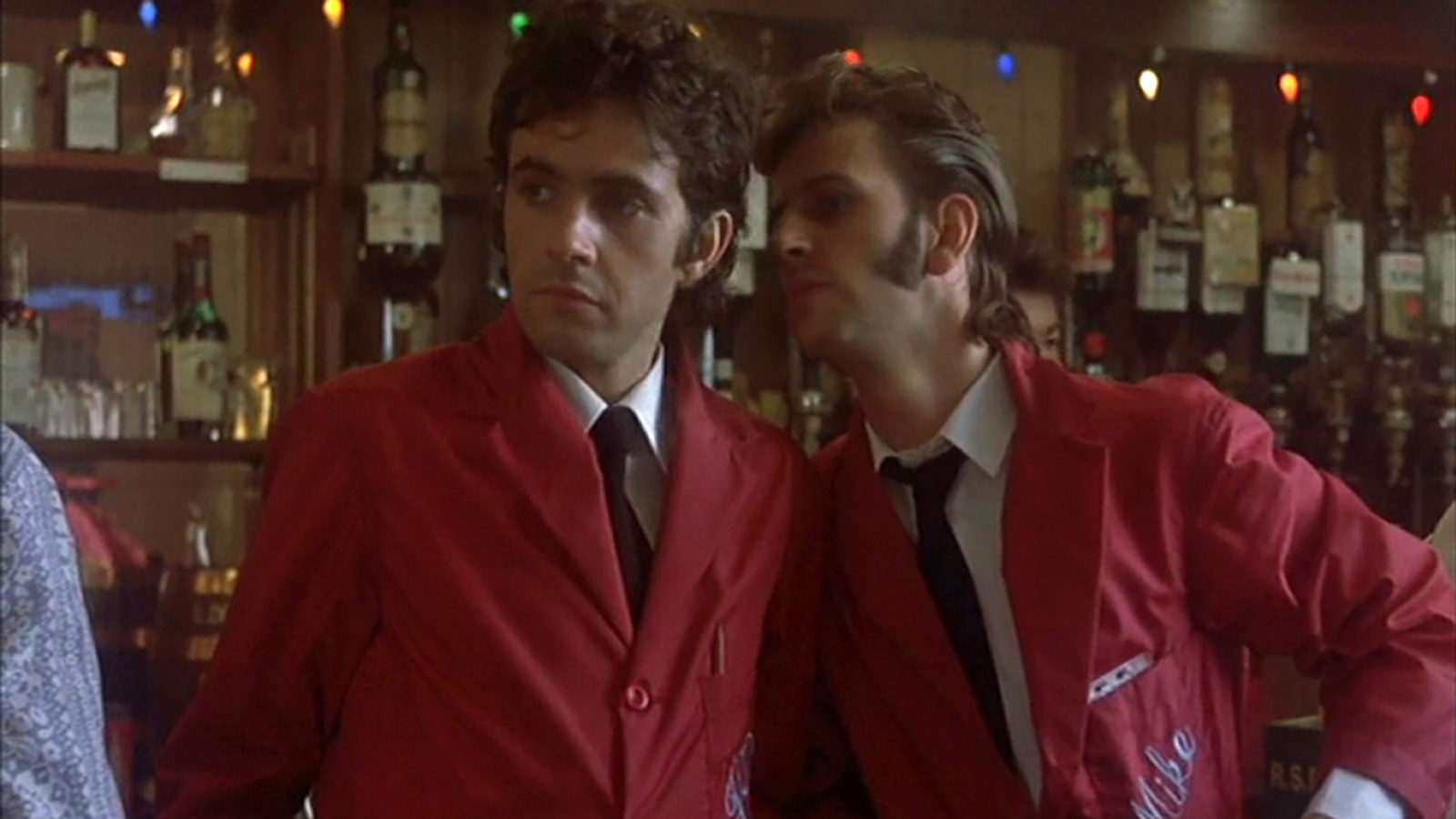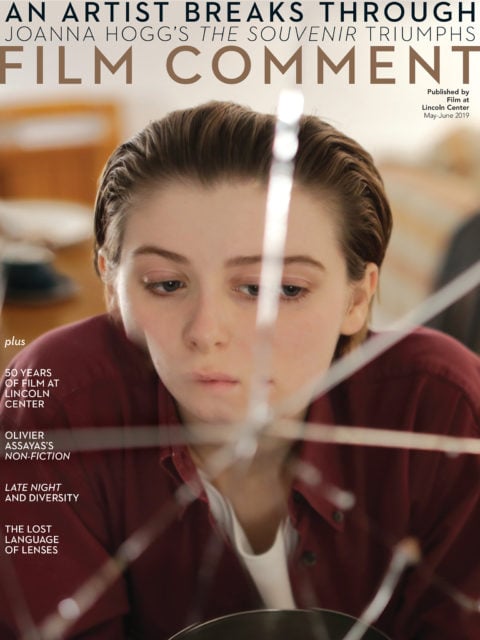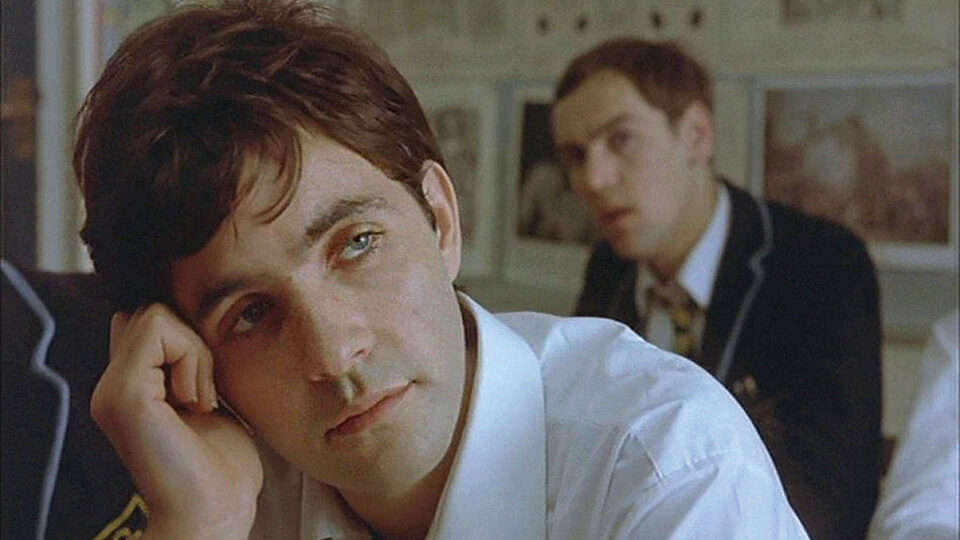
False Idols
Before I fully knew who David Essex was or even what he looked like, his name alone made me cringe. It conjured a musty, long-forgotten teen idol of the ’70s, a cut-rate David Cassidy with British teeth, a target for esoteric pub jokes. Essex was indeed a sensation in Britain in that decade, a number-one pop vocalist and teenybopper pin-up with songs like “Rock On” and “Gonna Make You a Star.” But in 1967, he also began a career as an actor, going on to star in popular rock ’n’ roll fables That’ll Be the Day (1973) and Stardust (1974). Stardust is a typical rise-and-fall tale of fame and hedonism, but its precursor, That’ll Be the Day, set in 1958, proves to be piercingly insightful and unpredictable.

Essex plays the same character in both movies, Jim MacLaine, shown first in That’ll Be the Day as a diffident teenage wannabe flitting between jobs and women. The singer’s performance is nothing like what I had come to expect (or dread). Shy and slender, with ice-blue eyes and a soft profile accented by wispy dark hair, Essex isn’t some flashy thing in the mode of Hollywood heartthrobs like Ryan O’Neal. He’s handsome, but in an unformed, soap-scrubbed way that easily fit into the working class, postwar Britain that is the film’s backdrop, with its nostalgic soundtrack of Dion, The Everly Brothers, and Jerry Lee Lewis.
Yet That’ll Be the Day is no sunny nostalgia trip or pop-idol vanity project. It’s a bracingly unsentimental depiction of the macho rock ’n’ roller era, with the quiet young man at its center a hidden well of cutthroat ambition. Screenwriter Ray Connolly cited as its inspiration the Harry Nilsson song “1941” (released in 1967), about the cycle of fathers abandoning sons and leaving emotionally crippled men in their wake. Jim begins the film as a schoolboy raised by a single mother who is Stardust determined for him to go to university like his pal Terry—but he has other ideas.
One day, Jim takes off for a seaside town, picking up a job selling beach chairs to tourists and unsuccessfully chasing girls. Eventually he meets fairground worker Mike (Ringo Starr), who gets him a job at the bumper cars and teaches him how to pilfer punters’ change. Mike is amusingly foul-mouthed and constantly skirt-chasing. He creates a monster of sorts in Jim, who becomes even more girl-crazy than his older friend. That’ll Be the Day winks to Essex’s pop-star quality without indulging it fully, rendering him as the sort of careless womanizer that doesn’t engender any room for dreaminess. Soon enough, Jim is writing his number of conquests playfully in lipstick on a girl’s bare back after sleeping with her, saying with relish: “You’d make a lovely scoreboard.”
It becomes clear there’s an ugly sort of hunger in Jim. Tight close-ups often show him in observant silence, studiously examining local rock ’n’ roll live acts and the self-assured Mike with the desire to copycat. He luxuriates in his sullen boyishness, turning his jackets up at the collars like ’50s matinee idols, constantly toying with cigarettes, and fashionably growing out his hair. But he’s all posture and mimicry, as revealed in one drunken moment when Jim slurs out his wishes to be famous. It’s a daringly unlikable role for someone poised to become a teenybopper hero, and Essex commits fully.
The sign of something even darker in the character comes in Jim’s casual pursuit of a much younger schoolgirl. Mike draws the line here, shouting at his friend to “pick on someone your own size.” It’s rather abruptly revealed that Jim has coerced her into sex, the most egregious example of many in the film of how poorly the “Angry Young Man” of this era treated women. The film doesn’t hesitate to underline Jim’s other moral failings. When Mike is beaten up on the fairground, Jim stays out of the way. It’s convenient for him to take over Mike’s job once he’s injured, and maybe be rid of the guy who knows how square he used to be.

That’ll Be the Day (Claude Whatham, 1973)
That’ll Be the Day is in fact set at the heyday of the Angry Young Man, and one can see echoes of films like Saturday Night and Sunday Morning in its intentionally deglamorizing character study. The blistering resentment of Albert Finney’s character, Arthur, is shared here by Jim, even if he wears it more casually. Both feel enormous disdain toward women, domesticity, and “straight” jobs, associating these things with a world “too small” for them. But in That’ll Be the Day, this unwarranted scorn is shown for the damage it does to women who are just trying to live their lives in the best way they know how. Jim’s aimlessness has a jagged edge that leaves them behind as collateral damage, themselves never afforded the privilege of being rebellious without consequences.
For a future rock legend (not depicted until Stardust) Jim almost never plays an instrument or takes to the stage. The most singing he does is at home in front of his Elvis poster. This isn’t a portrait of a would-be star so much as of a young man with just enough arrogance and superficial charisma to get him through life by the skin of his teeth.
The feverish, restless quality Essex brings is deployed perfectly in a fish-out-of-water scene where he’s invited to his friend’s college dance. He regards the room sullenly, sinking into a seat and practically disappearing into his red flannel jacket. The class difference is apparent; his longer hair and casual clothing stand out. The women here are different from the ones he chases on the fairground, and he is too inexperienced to know how to seduce them. It’s evidence of the limits of his personality, and his callowness is ill-hidden by his egotism. “I’m writing a novel about fairground life,” he offers unconvincingly, not long before the woman he’s talking to excuses herself to escape him. There’s no real passion in Jim; his modes are either charm or contempt. He’s a black hole with blue eyes, portraying a gnawing emptiness that can be a tricky feat for actors. If his posturing was in aid of insecurity, it might be endearing, but here the gleaming superiority complex is evident.
Jim’s ability to shed his skin is equally startling, as he does when he abandons a girl he has impregnated and wheedles his way back into his mother’s home. Cutting his hair and now trying to get a “straight” job, he takes up with a girl he knew from school named Jeanette, and decides to marry her. His tenderness toward her is so apparent that he almost seems to be growing, but as Stardust shows, this isn’t built to last. Future rock gods don’t cut their hair and work at their mothers’ shops. The final scene of That’ll Be the Day shows him buying a secondhand guitar and sagely telling the shopkeeper, “I’ll be all right,” before hitting the road on his own, leaving Jeanette behind as well.
Essex’s sly, self-aware performance goes well beyond the usual dictates of a star vehicle. He’s unpredictable, self-contained, and by the film’s conclusion has utterly divested the audience of any nostalgia or affection. That’ll Be the Day asks what it really takes for an ambitious young man to get to the top. In Essex’s unvarnished characterization of Jim MacLaine, we get a damning answer.
Christina Newland is a writer on film, culture, and boxing, with bylines at Sight & Sound, The Guardian, and others.







